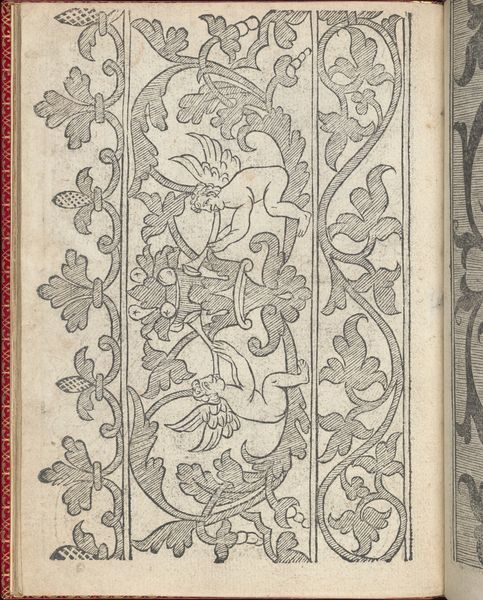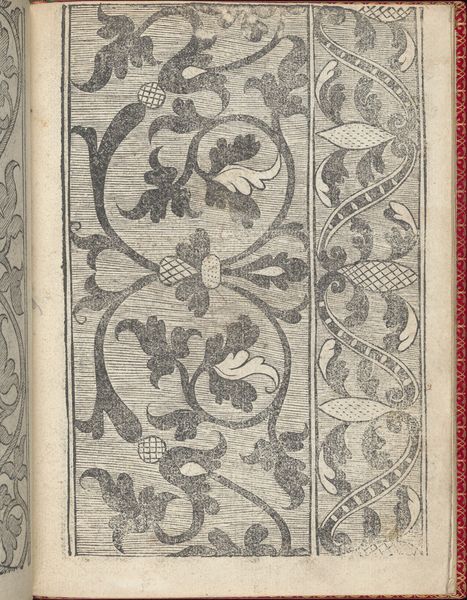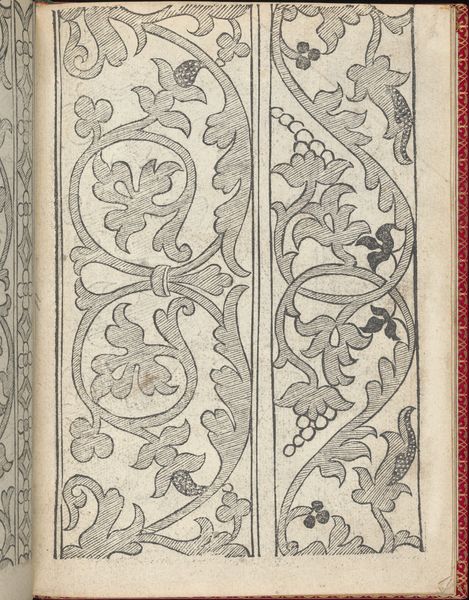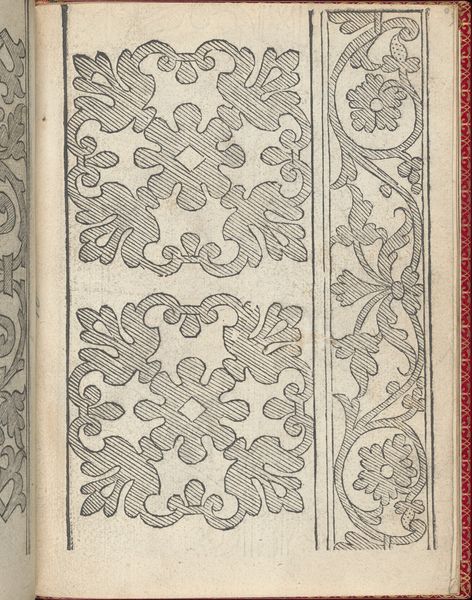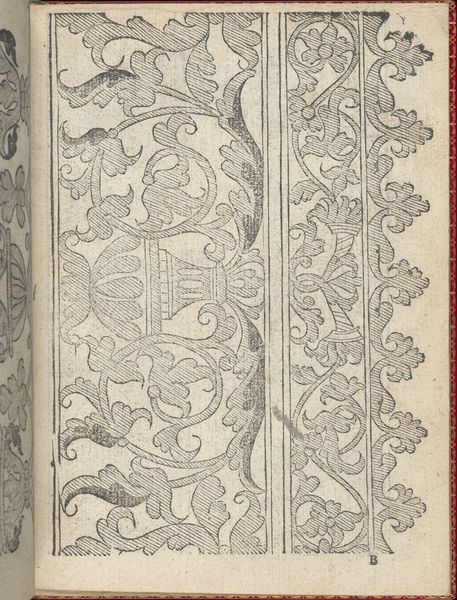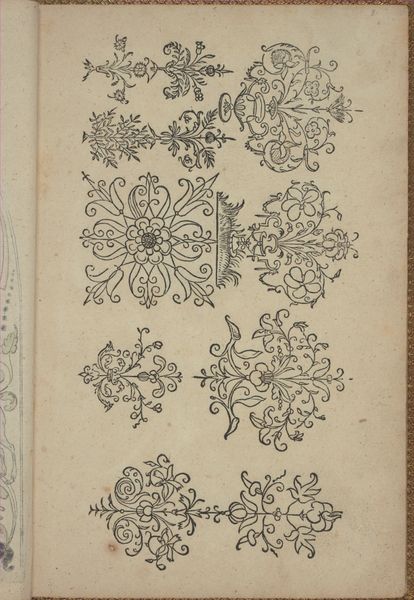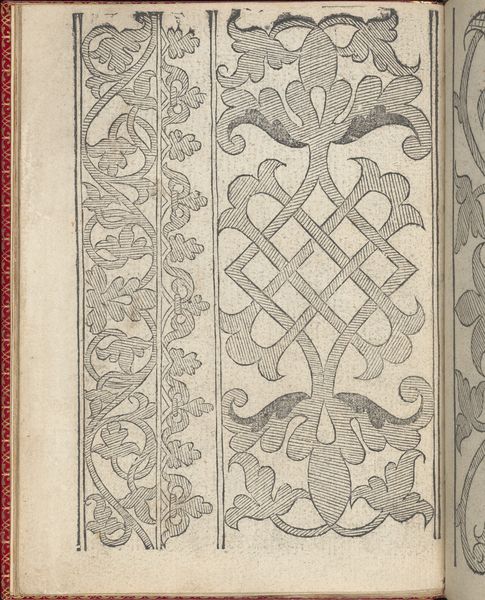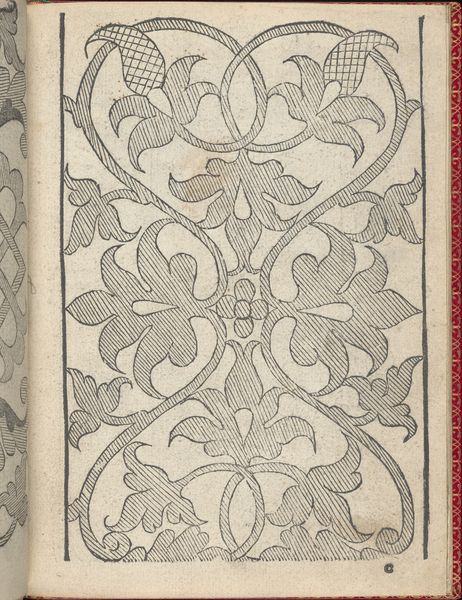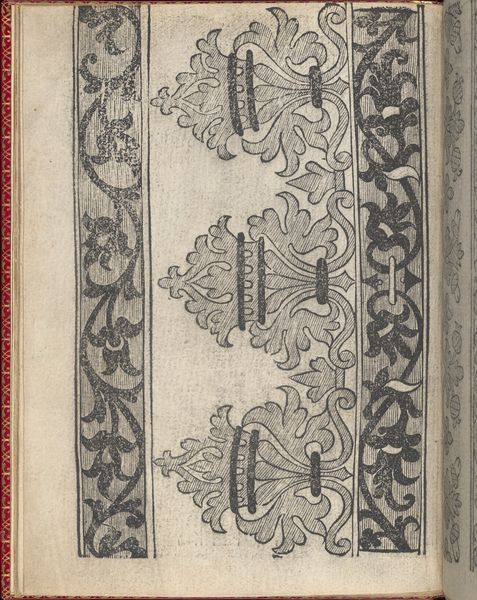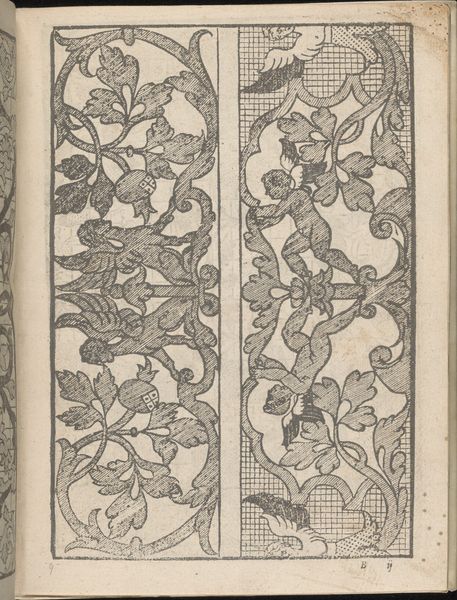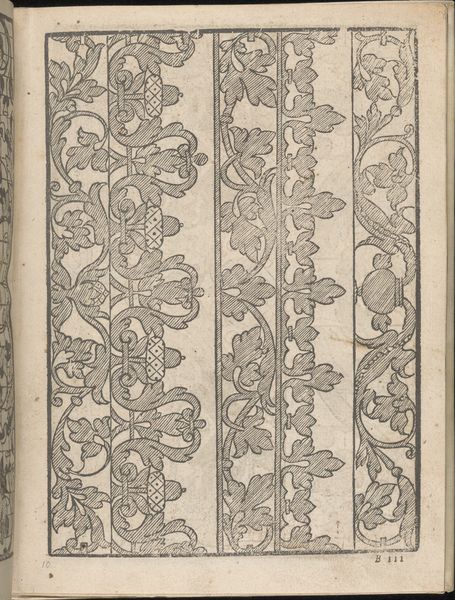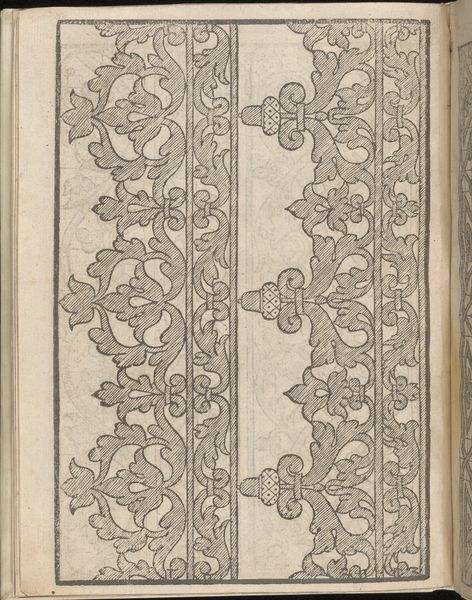
Il Monte. Opera Nova di Recami, page 4 (recto) 1557 - 1570
0:00
0:00
drawing, print, woodcut
#
drawing
# print
#
book
#
pattern background
#
geometric
#
woodcut
#
line
#
decorative-art
#
italian-renaissance
#
italy
Dimensions: Overall: 7 7/8 x 5 11/16 in. (20 x 14.5 cm)
Copyright: Public Domain
Curator: I’m struck by the contrast here—the delicate linework carving out such bold forms. What's your initial reaction? Editor: My eye is drawn to the repeating patterns and how they fill the page. There’s a sense of disciplined abundance in this. We're looking at a page from "Il Monte. Opera Nova di Recami," created by Giovanni Antonio Bindoni between 1557 and 1570. It’s currently held at the Metropolitan Museum of Art. Curator: And made, interestingly, using a woodcut print. Considering Bindoni was designing embroidery patterns for textiles, don’t you find it fascinating that he utilized printmaking, a process normally associated with mass production, to circulate designs for handcrafted work? Editor: Absolutely. The choice of woodcut itself is telling—the relative ease and affordability of the medium compared to, say, engraving, meant wider access to design ideas. Curator: This speaks to the relationship between artist and artisan. These pattern books provided accessible designs but also directed the handiwork of possibly lower class workers. What do you think that reveals about labor and consumption in Italian Renaissance decorative arts? Editor: It suggests a desire to standardize taste, perhaps. Disseminating these patterns would elevate the overall level of craftsmanship across the region, creating more uniform objects that speak to power through controlled dissemination. Curator: Control, yes, but also possibility. Print allowed these patterns to travel quickly between cities, enabling the rise of local interpretations, adapted through different weaving and embellishment practices. The vertical orientation and frame within a frame create layers. Editor: You are right. It leads my eye but within strict confines, making the ornate design quite orderly. Curator: Considering it's a woodcut, what do you read into the choice of such intricate decorative vocabulary on the page? Editor: I can see, as you noted earlier, how that could relate to a broader conversation about labor, power, and control through consumption and skill building. The production tells us as much as the design. Curator: It feels incomplete. It’s so clear that this is meant to inspire. Editor: A truly captivating insight into 16th-century decorative art. I feel ready to explore the Met further.
Comments
No comments
Be the first to comment and join the conversation on the ultimate creative platform.
